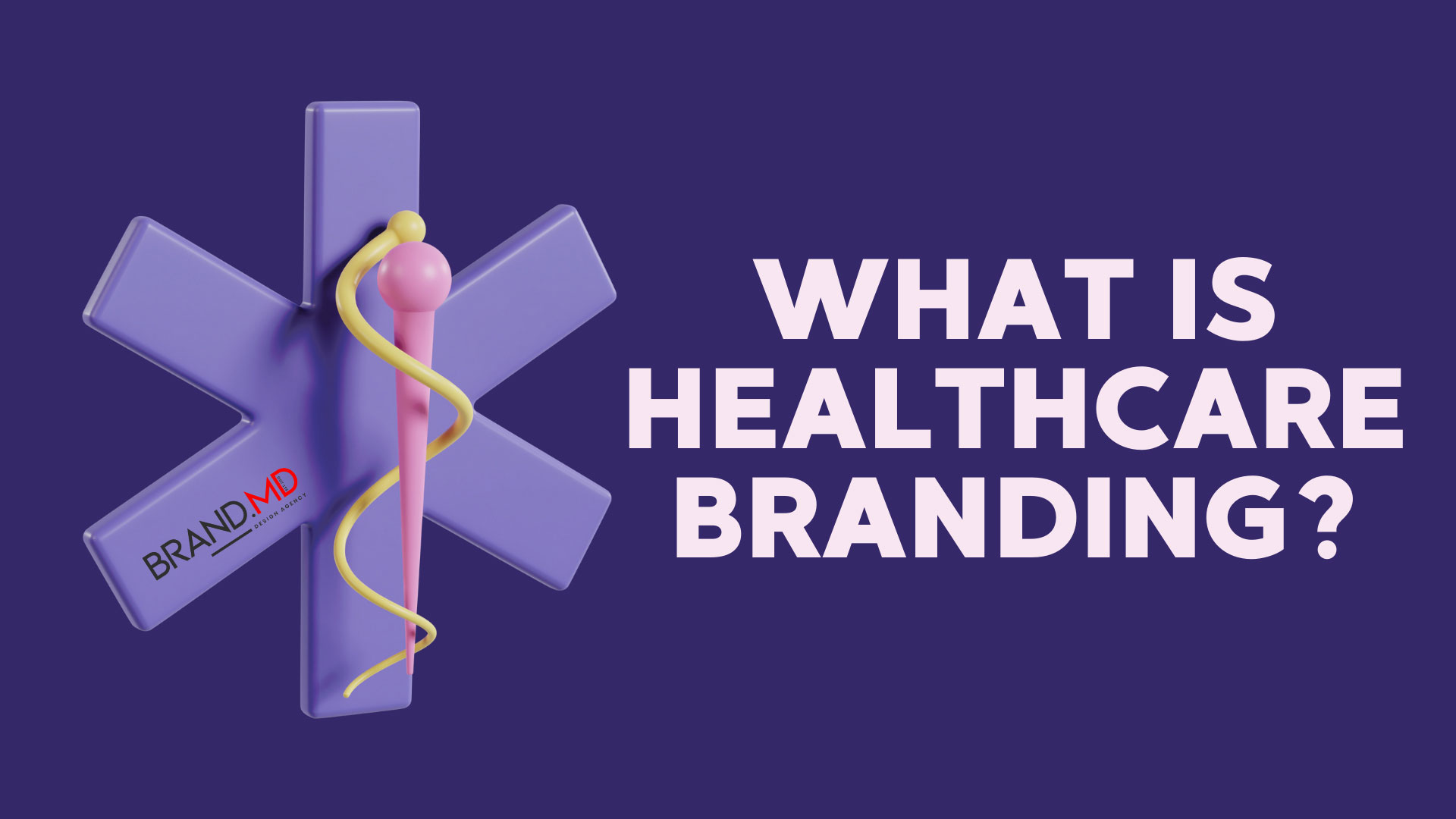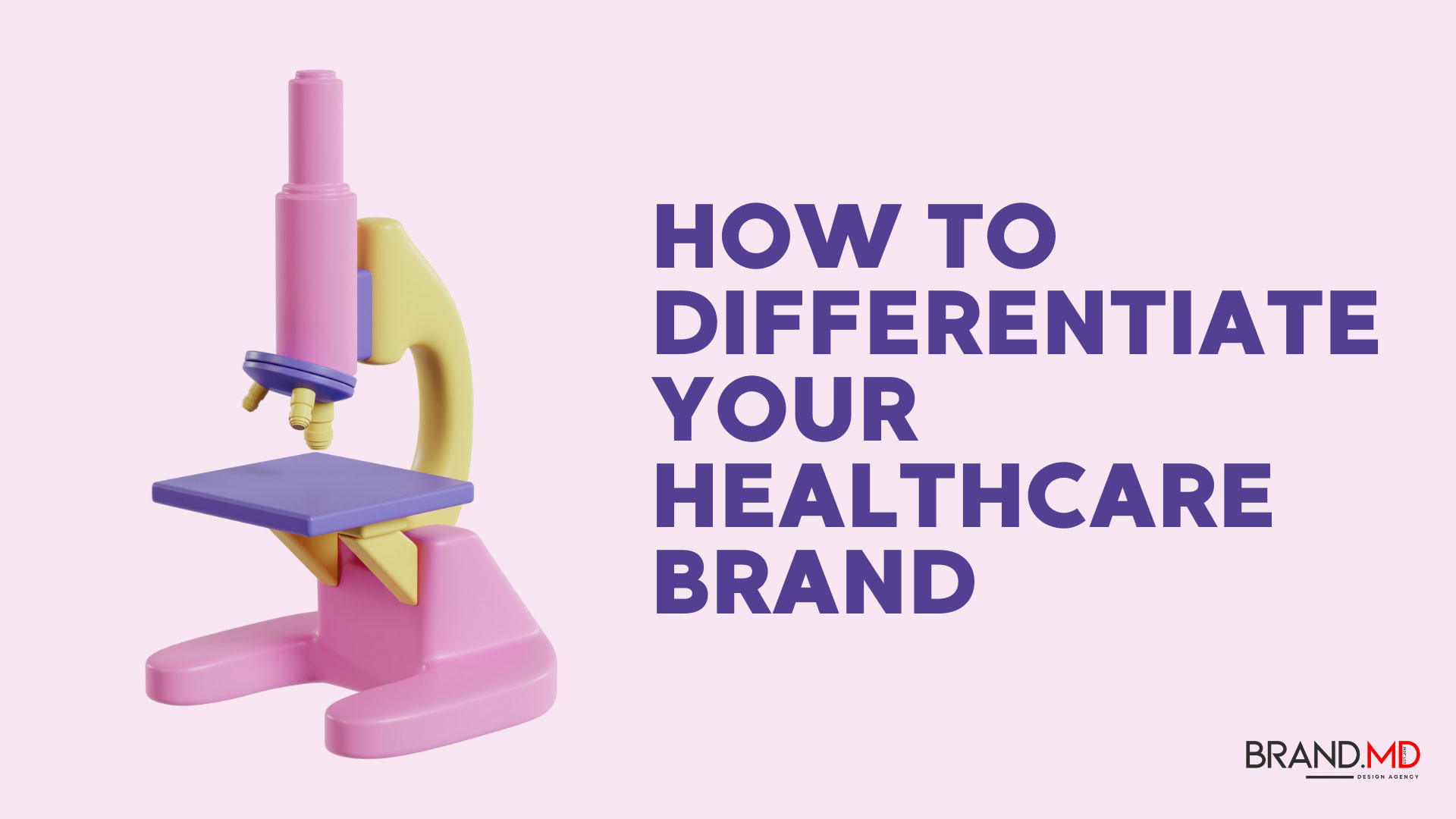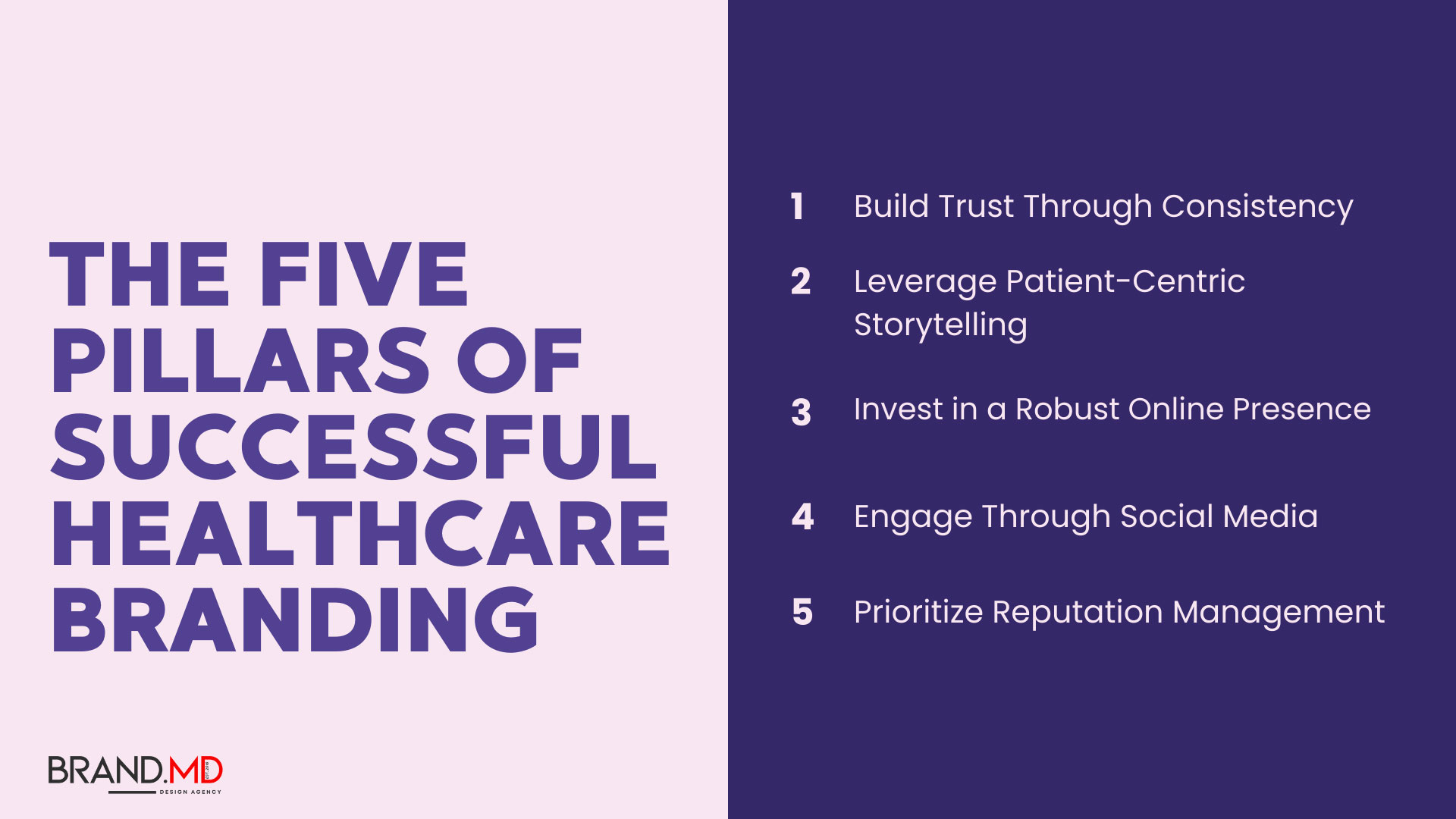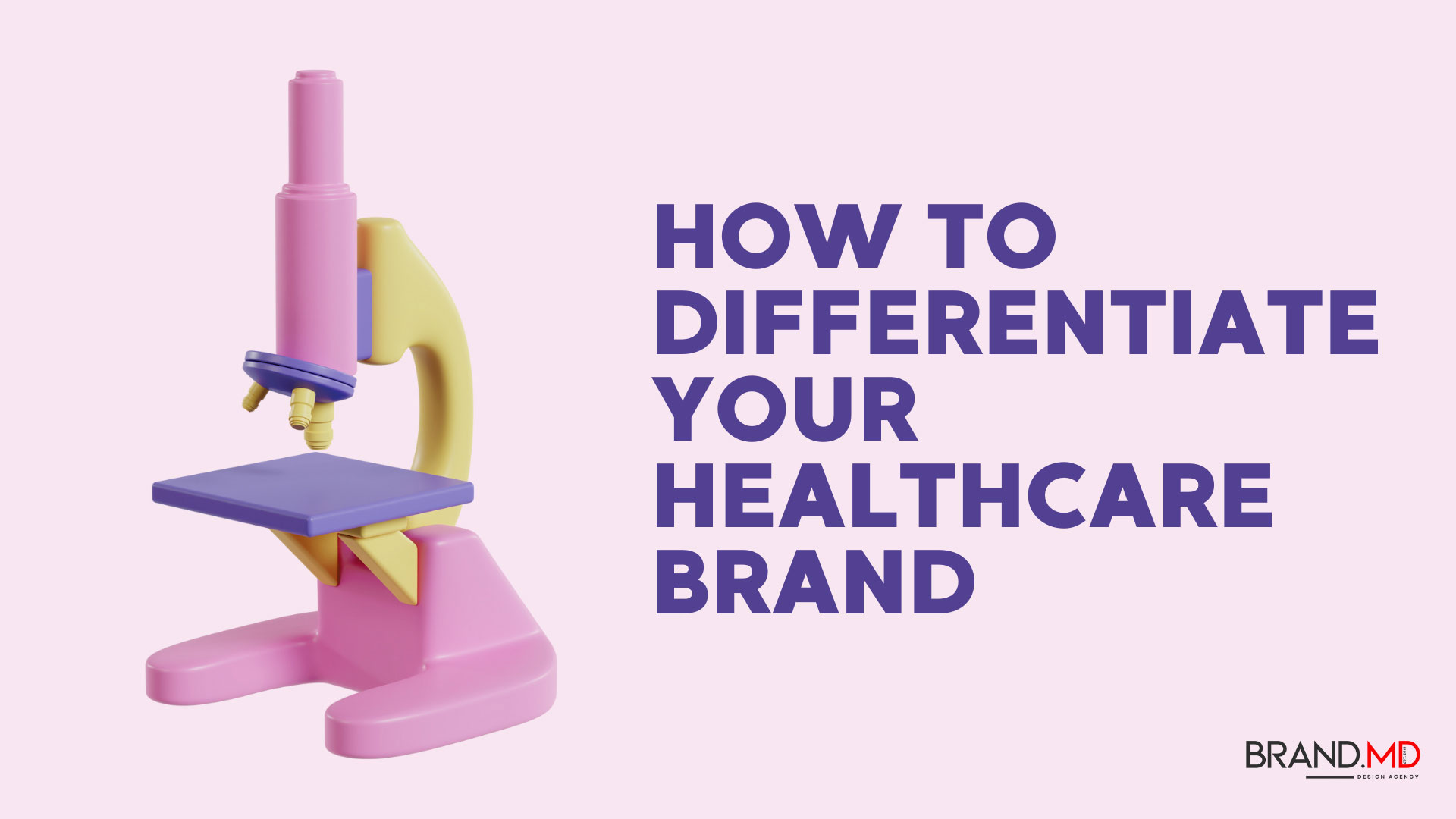
In the healthcare industry, branding is no longer just about logos and slogans—it’s about creating meaningful connections with patients, building trust, and positioning your organization as a leader in care. Patients today are empowered consumers, researching providers online, reading reviews, and comparing options before making decisions. This shift underscores the importance of a strong healthcare brand. A powerful brand not only sets your organization apart but also communicates your values, expertise, and patient-first approach. In this article, we’ll explore actionable strategies and real-world examples to help healthcare organizations elevate their branding and create a lasting impact.

Healthcare branding is the art and science of defining how a healthcare organization is perceived by patients, employees, and the broader community. It encompasses every element that shapes your audience’s experience and perception—from your mission and logo to the way your staff interacts with patients and how your services are presented online.
In today’s competitive and patient-driven healthcare environment, branding goes beyond aesthetics. It’s about creating a connection. A strong healthcare brand conveys trust, expertise, and empathy while positioning your organization as a leader in patient care. It’s not just about standing out—it’s about standing for something meaningful and consistent.
Healthcare decisions are often deeply personal, involving trust and emotional investment. Patients want to feel confident that they are choosing a provider who prioritizes their well-being. A compelling healthcare brand bridges this gap by:
For Example: Cleveland Clinic’s brand embodies empathy and patient-first care. Their tagline, “Care that’s focused on you,” reflects their mission and guides their patient experience, from their website to in-person interactions.

Mission and Vision: A clear and authentic mission and vision statement anchor your brand. They explain why your organization exists and what you aim to achieve, resonating with patients and employees alike.
Example: Mayo Clinic’s mission, “To inspire hope and contribute to health and well-being by providing the best care to every patient through integrated clinical practice, education, and research,” communicates their purpose and establishes their authority.
Brand Personality: Your brand’s personality determines how your organization communicates and connects with patients. It could be compassionate and approachable, cutting-edge and innovative, or a blend of these qualities.
Example: A pediatric clinic might adopt a warm, playful tone to appeal to families, while a research hospital might emphasize innovation and expertise.
Visual Identity: Your logo, color palette, and design elements are more than just visuals—they are symbols of your values and promise. A strong visual identity ensures your brand is instantly recognizable and memorable.
Example: Kaiser Permanente’s blue and green branding conveys a sense of trust and care, aligning with their commitment to comprehensive health solutions.
Patient Experience: Every interaction patients have with your organization reflects your brand. From scheduling an appointment to receiving care and following up, the experience should align with your brand’s core values.
Example: A clinic that values accessibility ensures that appointment booking is simple, with user-friendly online tools and clear communication.
Messaging and Storytelling: Your messaging communicates who you are, what you do, and why it matters. Stories humanize your brand, making it relatable and memorable.
Example: St. Jude Children’s Research Hospital uses storytelling to highlight patient journeys and demonstrate the impact of their work, creating emotional connections with their audience.
Effective healthcare branding not only attracts patients but also fosters loyalty, encourages word-of-mouth referrals, and motivates employees to embody your values. A strong brand becomes synonymous with trust, quality, and care, ensuring that your organization stands out in a crowded marketplace. Whether you are a private clinic, a hospital system, or a wellness center, investing in healthcare branding is essential for long-term success. It’s not just about marketing—it’s about creating a legacy of care and impact.

Build Trust Through Consistency
In healthcare, trust is the cornerstone of every patient relationship. A consistent brand message and experience across all touchpoints reassure patients and build credibility. Consistency doesn’t just mean using the same logo or colors—it means delivering the same level of quality and care whether a patient engages with your website, social media, staff, or facilities.
When branding lacks consistency, it creates confusion and erodes trust. Patients may wonder if they are dealing with the same organization when the tone of communication or the quality of service varies. On the flip side, a consistent brand reinforces reliability and professionalism, making patients more likely to choose your services and recommend them to others.
Action Steps:
Leverage Patient-Centric Storytelling
Healthcare branding is at its most effective when it focuses on the people it serves. Stories of hope, healing, and exceptional care humanize your brand and make it relatable. Patient-centric storytelling creates an emotional connection, helping patients see your organization as a trusted partner in their health journey.Storytelling is a universal tool for conveying complex ideas in an engaging way. For healthcare brands, it offers a way to showcase success stories, share staff expertise, and communicate your mission in a compelling and memorable manner. When done right, it builds empathy and trust.
Action Steps:
Invest in a Robust Online Presence
The first impression of your healthcare brand often comes from its digital footprint. Patients turn to search engines, review sites, and social media to assess healthcare providers long before booking an appointment. A robust online presence ensures that your organization stands out as professional, trustworthy, and patient-focused.
In today’s digital-first world, your website and online profiles are more than just informational—they’re extensions of your brand. They need to be optimized for both functionality and engagement, offering easy navigation and clear communication of your services.
Action Steps:
Engage Through Social Media
Social media platforms are vital for connecting with patients and showcasing your brand’s human side. They provide an opportunity to educate, engage, and inspire trust in a casual yet professional setting. Done well, social media builds relationships that translate to stronger patient loyalty.
Social media isn’t just about posting updates—it’s about fostering two-way communication. Patients appreciate when healthcare organizations respond to comments, answer questions, and share relatable content that reflects their values and priorities.
Action Steps:
Prioritize Reputation Management
Online reputation can make or break a healthcare organization. With patients reading reviews before choosing providers, managing your online reputation is essential to establishing trust and attracting new patients.
A strong reputation isn’t built overnight—it’s cultivated through consistent excellence and active management of patient feedback. By monitoring and responding to reviews, you not only protect your brand but also show a commitment to patient satisfaction.
Action Steps:

Standing out in a crowded market requires clarity and focus. Define what makes your organization unique and communicate that consistently.
Differentiation Strategies:
Example: A rural clinic that promotes its telehealth services and personalized care can position itself as a lifeline for remote communities.
The healthcare landscape is constantly evolving. As patients demand transparency, accessibility, and innovation, organizations that adapt will thrive. Emerging trends like AI-driven personalization, telehealth branding, and data-driven marketing are shaping the future of healthcare branding. Healthcare branding is not a one-time effort—it’s an ongoing commitment to understanding patient needs, staying authentic, and delivering exceptional experiences. By investing in strategic branding, your organization can build trust, foster loyalty, and achieve long-term success.

We’re thrilled to have you at Design Hiro, branding is about more than a logo—it’s creating an experience that keeps guests coming back. Whether you’re launching or refining your brand, we’re here to help you stand out and build lasting loyalty. Let’s make your brand unforgettable!
SCHEDULE A CALL TODAY!
In the healthcare industry, branding is no longer just about logos and slogans—it’s about creating meaningful connections with patients, building trust, and positioning your organization as a leader in care. Patients today are empowered consumers, researching providers online, reading reviews, and comparing options before making decisions. This shift underscores the importance of a strong healthcare brand. A powerful brand not only sets your organization apart but also communicates your values, expertise, and patient-first approach. In this article, we’ll explore actionable strategies and real-world examples to help healthcare organizations elevate their branding and create a lasting impact.

Healthcare branding is the art and science of defining how a healthcare organization is perceived by patients, employees, and the broader community. It encompasses every element that shapes your audience’s experience and perception—from your mission and logo to the way your staff interacts with patients and how your services are presented online.
In today’s competitive and patient-driven healthcare environment, branding goes beyond aesthetics. It’s about creating a connection. A strong healthcare brand conveys trust, expertise, and empathy while positioning your organization as a leader in patient care. It’s not just about standing out—it’s about standing for something meaningful and consistent.
Healthcare decisions are often deeply personal, involving trust and emotional investment. Patients want to feel confident that they are choosing a provider who prioritizes their well-being. A compelling healthcare brand bridges this gap by:
For Example: Cleveland Clinic’s brand embodies empathy and patient-first care. Their tagline, “Care that’s focused on you,” reflects their mission and guides their patient experience, from their website to in-person interactions.

Mission and Vision: A clear and authentic mission and vision statement anchor your brand. They explain why your organization exists and what you aim to achieve, resonating with patients and employees alike.
Example: Mayo Clinic’s mission, “To inspire hope and contribute to health and well-being by providing the best care to every patient through integrated clinical practice, education, and research,” communicates their purpose and establishes their authority.
Brand Personality: Your brand’s personality determines how your organization communicates and connects with patients. It could be compassionate and approachable, cutting-edge and innovative, or a blend of these qualities.
Example: A pediatric clinic might adopt a warm, playful tone to appeal to families, while a research hospital might emphasize innovation and expertise.
Visual Identity: Your logo, color palette, and design elements are more than just visuals—they are symbols of your values and promise. A strong visual identity ensures your brand is instantly recognizable and memorable.
Example: Kaiser Permanente’s blue and green branding conveys a sense of trust and care, aligning with their commitment to comprehensive health solutions.
Patient Experience: Every interaction patients have with your organization reflects your brand. From scheduling an appointment to receiving care and following up, the experience should align with your brand’s core values.
Example: A clinic that values accessibility ensures that appointment booking is simple, with user-friendly online tools and clear communication.
Messaging and Storytelling: Your messaging communicates who you are, what you do, and why it matters. Stories humanize your brand, making it relatable and memorable.
Example: St. Jude Children’s Research Hospital uses storytelling to highlight patient journeys and demonstrate the impact of their work, creating emotional connections with their audience.
Effective healthcare branding not only attracts patients but also fosters loyalty, encourages word-of-mouth referrals, and motivates employees to embody your values. A strong brand becomes synonymous with trust, quality, and care, ensuring that your organization stands out in a crowded marketplace. Whether you are a private clinic, a hospital system, or a wellness center, investing in healthcare branding is essential for long-term success. It’s not just about marketing—it’s about creating a legacy of care and impact.

Build Trust Through Consistency
In healthcare, trust is the cornerstone of every patient relationship. A consistent brand message and experience across all touchpoints reassure patients and build credibility. Consistency doesn’t just mean using the same logo or colors—it means delivering the same level of quality and care whether a patient engages with your website, social media, staff, or facilities.
When branding lacks consistency, it creates confusion and erodes trust. Patients may wonder if they are dealing with the same organization when the tone of communication or the quality of service varies. On the flip side, a consistent brand reinforces reliability and professionalism, making patients more likely to choose your services and recommend them to others.
Action Steps:
Leverage Patient-Centric Storytelling
Healthcare branding is at its most effective when it focuses on the people it serves. Stories of hope, healing, and exceptional care humanize your brand and make it relatable. Patient-centric storytelling creates an emotional connection, helping patients see your organization as a trusted partner in their health journey.Storytelling is a universal tool for conveying complex ideas in an engaging way. For healthcare brands, it offers a way to showcase success stories, share staff expertise, and communicate your mission in a compelling and memorable manner. When done right, it builds empathy and trust.
Action Steps:
Invest in a Robust Online Presence
The first impression of your healthcare brand often comes from its digital footprint. Patients turn to search engines, review sites, and social media to assess healthcare providers long before booking an appointment. A robust online presence ensures that your organization stands out as professional, trustworthy, and patient-focused.
In today’s digital-first world, your website and online profiles are more than just informational—they’re extensions of your brand. They need to be optimized for both functionality and engagement, offering easy navigation and clear communication of your services.
Action Steps:
Engage Through Social Media
Social media platforms are vital for connecting with patients and showcasing your brand’s human side. They provide an opportunity to educate, engage, and inspire trust in a casual yet professional setting. Done well, social media builds relationships that translate to stronger patient loyalty.
Social media isn’t just about posting updates—it’s about fostering two-way communication. Patients appreciate when healthcare organizations respond to comments, answer questions, and share relatable content that reflects their values and priorities.
Action Steps:
Prioritize Reputation Management
Online reputation can make or break a healthcare organization. With patients reading reviews before choosing providers, managing your online reputation is essential to establishing trust and attracting new patients.
A strong reputation isn’t built overnight—it’s cultivated through consistent excellence and active management of patient feedback. By monitoring and responding to reviews, you not only protect your brand but also show a commitment to patient satisfaction.
Action Steps:

Standing out in a crowded market requires clarity and focus. Define what makes your organization unique and communicate that consistently.
Differentiation Strategies:
Example: A rural clinic that promotes its telehealth services and personalized care can position itself as a lifeline for remote communities.
The healthcare landscape is constantly evolving. As patients demand transparency, accessibility, and innovation, organizations that adapt will thrive. Emerging trends like AI-driven personalization, telehealth branding, and data-driven marketing are shaping the future of healthcare branding. Healthcare branding is not a one-time effort—it’s an ongoing commitment to understanding patient needs, staying authentic, and delivering exceptional experiences. By investing in strategic branding, your organization can build trust, foster loyalty, and achieve long-term success.

We’re thrilled to have you at Design Hiro, branding is about more than a logo—it’s creating an experience that keeps guests coming back. Whether you’re launching or refining your brand, we’re here to help you stand out and build lasting loyalty. Let’s make your brand unforgettable!
SCHEDULE A CALL TODAY!